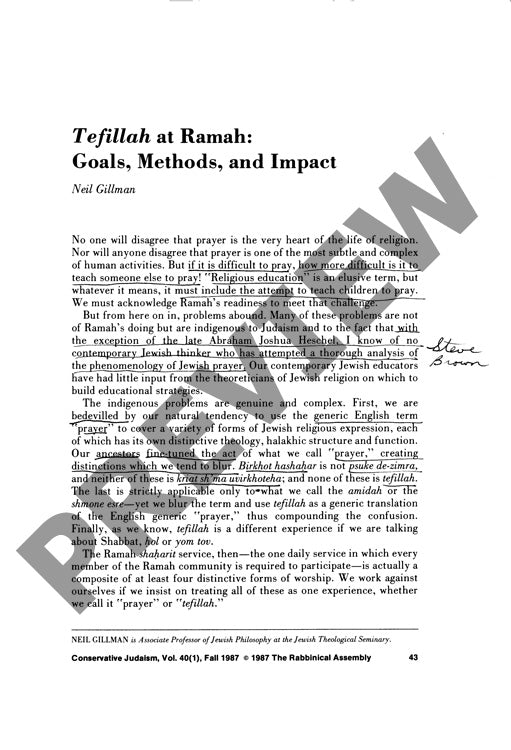Tefillah at Ramah Goals Methods and Impa
Couldn't load pickup availability
Teaching Jewish prayer confronts inherent tensions between structure and spontaneity, institutional requirements and personal spirituality - tensions that become particularly acute in summer camp settings. At Camp Ramah, a phenomenological analysis reveals four distinct educational objectives driving tefillah (prayer) instruction: synagogue skill development, liturgical comprehension, spiritual cultivation, and Conservative Jewish ideological transmission. Through critical examination of traditional prayer models, especially the interplay between keva (structured obligation) and kavannah (spontaneous devotion), the research evaluates these objectives against developmental considerations for adolescent campers. While Ramah demonstrates strong outcomes in technical skills and moderate success in liturgical education, pietistic spirituality instruction remains challenging due to institutional constraints and limited theoretical frameworks. Notably, Ramah has pioneered an influential American Jewish worship style characterized by egalitarian participation, distributed leadership, and community-centered spatial arrangements - innovations now widely adopted in synagogues nationwide. Despite gaps in phenomenological understanding of Jewish worship that affect prayer education, Ramah has succeeded in integrating religious practice into daily Jewish living and fostering meaningful communal worship experiences that have shaped American Jewish life for generations.

More Information
-
Physical Description
-
Publication Information
Published 1987
ISBN
-
Publication Credits
Neil Gillman

